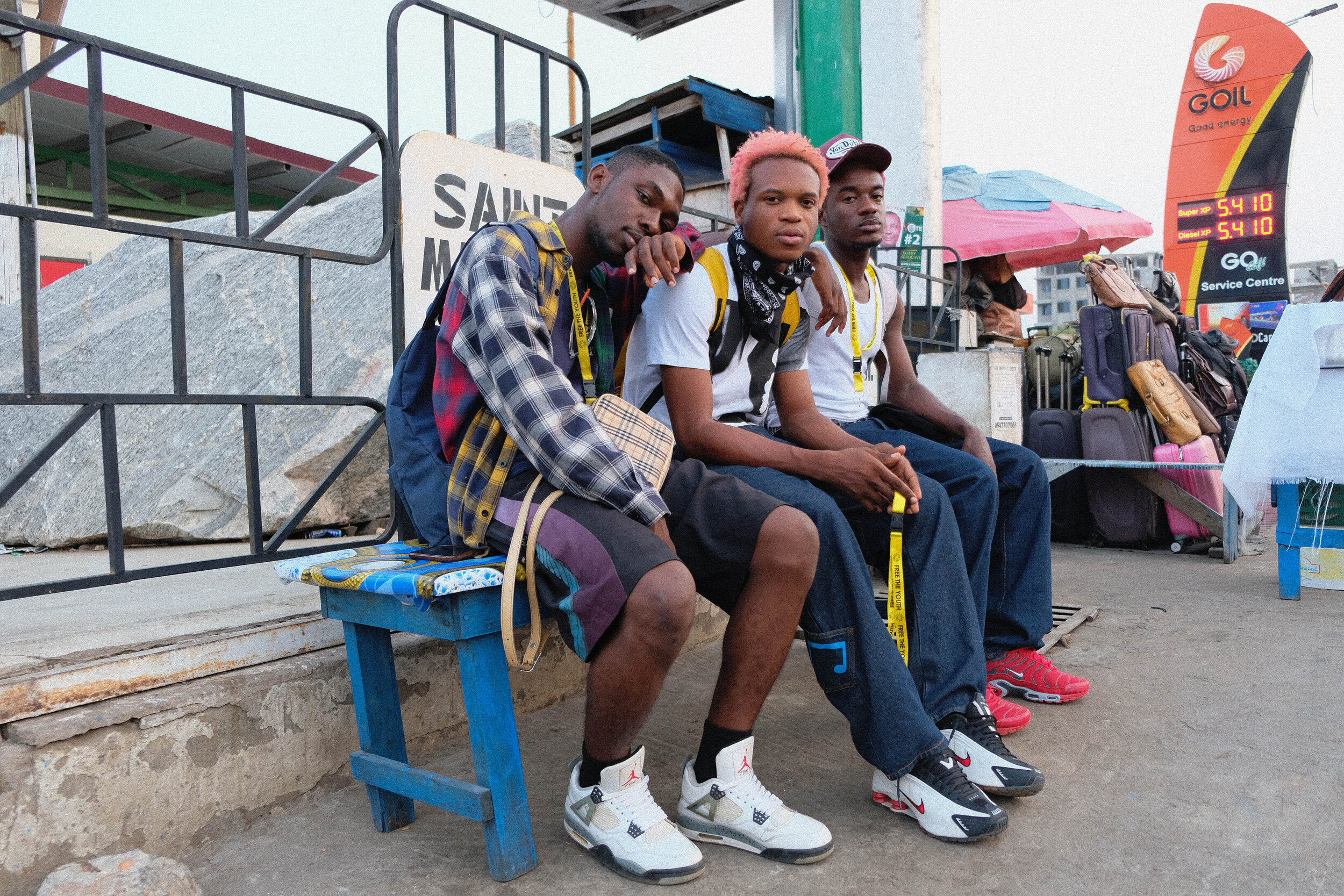Free The Youth is about empowering the creative minds
Free The Youth is a collective from Accra that is known because of its streetwear and its youth empowerment. I wanted to talk to them because I love their clothes and was curious to hear more about their social mission – but more so because they recently got commissioned by Footlocker to collaborate on a new Nike SHOX.
A collaboration with Footlocker EU for the Nike SHOX
“When the email came in I couldn’t believe it. I somehow still think of it as a dream” Jonathan Coffie, also known as Joey Lit, (25), tells me. We meet in Osu, in a coffee bar. We know each other from the creative scene in Accra and from a few sneaker talks we both were part of. I have been following them as a brand and love the streetwear items they bring out. This December they organised several events I attended; ‘giving back’ was central theme in most of them. I was interested in their story because it felt they have a bigger mission than ‘just’ selling clothes and creating a community.
Kelly by Carmen Hogg
Jonathan I start the interview because Shace and Kelly are stuck in traffic. We first, as fellow sneaker lovers, had to discuss the collaboration with Nike and Footlocker. Free the Youth was one of the three crews worldwide that got commissioned by Footlocker to design the newly released SHOX and shoot a campaign for it. He smiles and has a dreamy look in his eyes when he talks about it. “I still thought it wouldn’t happen until they called me and said the photos were going live, even after payment not”. Free the Youth selected the colour way for the SHOX and shot the campaign; “The entire campaign was shot and produced by Ghanaians” . Footlocker was only in charge of media production. “They only sent one producer down… but she is Ghanaian too”.
Joey by Carmen Hogg
How they started
Free The Youth started in 2013. Kelly and Jonathan were in the same school and both wanted to promote Africa, create another [than the one of famine and corruption] image of Ghana and started taking pictures. “We didn’t have a good phone, so we borrowed a friends’ phone and went [from Tema] to Accra”. They posted their best images and used hashtags “We learned it while we were doing. We were gaining popularity. At a point we recruited the other members”. At a certain moment they decided to design t-shirts “but they weren’t for sale, we gave them to upcoming artist-friends to wear like Kwesi Arthur, Amaarae, B4bonah”. It made their popularity grow and at a certain moment they decided to start selling shirts too. Today they have different items in their collection; from key chains, to water bottles and soon high fashion items with denim and leather.
Shace by Carmen Hogg
The evolution
This year they didn’t only organize their own events, the collective was part of many other events of other brands, like Daily Paper, and panel talks of global organizations like Sony. People are interested in the brand “I think because of our originality. We’re at the forefront of Ghanaian streetwear and fashion, people are interested in our honesty, authenticity and originality”. Jonathan talks about being raw and speaking to the youth. “We’re raw in a sense that we make all our designs Ghana related but we make it cool for the young kids, Ghanaian and youthful and stylish”. All of their activities and designs have a direct link, or impact, to Ghana. “This year we want to do a lot of workshops and set up a creative institution like this for the kids. A big space where kids can come and learn any of their creative arts of their choice”. Jonathan emphasizes the importance of giving back. “Once we have skills to teach younger generations, we shouldn’t have them go through the same struggles we went through. We are trying to bridge the world through Ghana”. The privileges of being in Ghana is to have all the crafts and arts available, the challenge is to feel free to explore them, and explore your own creativity. Just like many other youngsters Jonathan did go to school and pursued a degree, his was in engineering. “We do that for the parents, right? Though my degree comes in handy now…”.
Free The Youth in Osu (Accra) by Carmen
Jonathan is currently working hard to turn Free the Youth into a NGO with which he’s able to soon raise funds for the bigger purpose; making Free the Youth a creative institution where “…those who can’t afford university come to learn creative stills like dance, music, photography, fashion”. All for free; the kids participating kids don’t have to pay tuition “That’s when I know, the statement Free The Youth, is really free the youth...”
Free the Youth by Carmen Hogg







